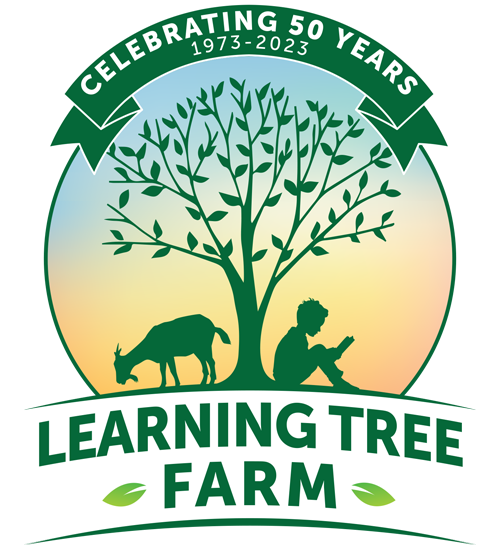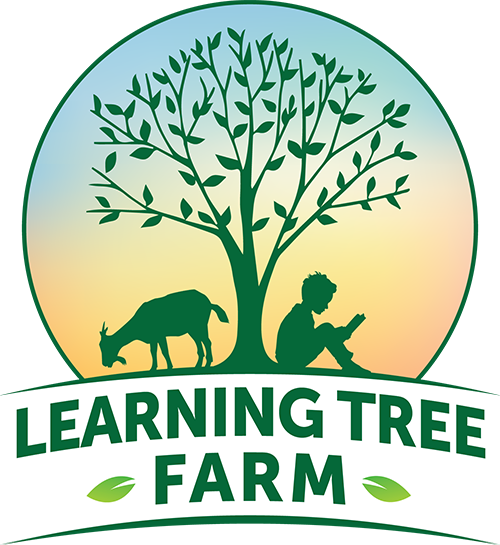Frequently Asked Questions
How did Learning Tree Farm get started?
In the early 1970s, two teachers, Sally Keyes and Jean Ryan, noticed that not all students learn well in a classroom setting. They took their students on walking or biking field trips to Island Park and Triangle Park in Dayton. Students became excited about seeing “so many trees in one place”, bird’s nests in trees, bugs under rocks, and the river. When the students returned to school, they shared their adventures. Sally and Jean were sold on the value and importance of hands-on learning!
So, in 1973 Sally and Jean, along with many friends as supporters, founded Learning Tree Farm. Learning Tree Farm is a non-profit with the mission to engage people in hands-on, nature-based learning in a timeless farm setting. The property purchased in Jefferson Township had been neglected for years and was in disrepair. Getting the Farm ready for visitors took much hard work in the barns, fields, and yards. The first year brought 200 students from Dayton schools.
Today, the Farm serves over 8,000 students each year from nine counties and the number is growing! The Farm offers programs for children and adults, including a variety of fun and educational nature-based field trips and family programming, annual family farm passes and is a great location for outdoor retreats, parties, and meetings.
How did Learning Tree Farm get its name? Is there actually a learning tree?
The tallest, the oldest, and for humankind, the most bountiful of living things are trees. From the substance of trees we derive, food, fuel and shelter, shade in the summer, fruit to eat, roots that help keep the soil in place, lumber for our homes, and wood for our fire; from their grace and enduring beauty we draw inspiration and a sense of renewal.
Because the Farm has over 40 different kinds of trees, because they are so prominent, and because they offer us much to learn, the co-founders chose Learning Tree Farm as the name!
There never was a specific “learning tree” for everyone. Each person looks at all the trees on the Farm and finds his or her own “learning tree”. Now, when visitors come they are asked to find their “learning tree” from the hundreds on the Farm!
What kinds of animals are at the farm?
Throughout the year, the Farm strives to have a variety of traditional farm animals – cows, ducks, goats, pigs, sheep, donkeys, chickens, ponies, and assorted dogs and cats. The animals live in two barns – the Bank Barn (built on the side of a banked hill) and a Tobacco Barn (originally named for drying the tobacco that was grown on the farm). To take good care of the animals, Learning Tree Farm uses the services of a veterinarian and an experienced, dedicated farm staff.
Can I pet the animals? What are their names?
To fully live the “hands-on experiences”, everyone is invited and encouraged to pet the animals. For everyone’s safety, remember you are a visitor in their home – be gentle, be kind, move slowly, and speak quietly. Close the gates behind you to keep our animals and farm safe. Please, for the health and safety of animals and visitors, NO FEEDING any of the animals. An adult should always be with children in the pastures and stalls.
Some animals come to Learning Tree Farm with a name. Sometimes animals are born at the farm, and our staff gives them names. You can ask a Learning Tree Farm staff person or check the signage by the stalls for some of the names. Visitors are encouraged to name the animals for the day!
What does the Farm grow? Is there a garden?
The Farm has a raised bed vegetable garden, an orchard, grapevines, and an herb garden. Flower gardens grace the yard around the Century House. With the help of a local farmer, hay, corn, and soybeans (on a rotating schedule) grow in the larger fields.
The vegetable garden has raised boxes for growing fruits and vegetables. In the spring, the vegetable garden grows lettuce, spinach, carrots, peas, radishes, and other cold-weather crops. In the summer, an abundant supply of tomatoes, onions, beans, cucumbers, various hot and sweet peppers, potatoes, okra, and many other warm-weather crops occupy the garden. The fruit trees bear apples, pears, and peaches. In the fall, we grow kale, spinach, squash, brussels sprouts, cauliflower, and broccoli. In the winter, most of the garden rests, but we do have a small greenhouse where we grow spinach, kale, swiss chard, and lettuce.
The grapevines produce purple and white grapes that are used to make juice and jam. Polly’s Herb Garden is behind the Century House. Basil, lavender, sage, rosemary, thyme, Italian parsley, and costmary are regularly planted herbs.
Each garden is used as part of the programs. Visitors learn that the tops of some plants, bottoms of other plants, and the middle of plants are edible. Tasting and smelling are integral to hands-on activities!
Learning Tree Farm produce is sold or bartered to help sustain the Farm.
What can I do at Learning Tree Farm?
Everyone is encouraged to see all features of the Farm. You can spend the day visiting the animals, exploring the herb, vegetable, and flower gardens, and the orchard. You can hike the woodland trails, through the meadows, hayfields, and thickets. You can learn about pioneers living in the Century House. You can explore the Bank Barn and the Tobacco Barn. Starting the end of April 2022, visitors can also checkout our Welcome Sign, found in the driveway loop between the Century House and Bank Barn, for details on our new Storybook Trail. This trail will rotate to new locations with different children’s stories through out the year.
There’s a nature play area with a tractor or two, a playhouse, balance beams, tunnels, rocks to jump, trees to climb, and a short wooded trail that children can explore on their own. Bring lunch and drinks to enjoy in the covered picnic shelter. There are usually a few barn cats to pet, as well as our canine staff, Trip, Scout, and Bean who welcome visitors, safeguard the farm and they may invite you to play a game of fetch!
What kind of programs are there at the Farm?
Learning Tree Farms offers multigenerational programs that focus on nature, agriculture, Ohio history, and healthy living. We incorporate hands-on experiences into all our programming. All aspects of the Farm – animals, gardens, fields, and people are used to enrich the experience.
How many buildings are on the Farm?
There are 5 buildings on the Farm – Bank Barn, Tobacco Barn, Century House, Milk House/Wash House, and Smoke House. The Century House, the original homestead, was built in parts. The first part has one room downstairs with a winding staircase that leads to a room upstairs. The downstairs room was used as the kitchen and sitting area with the original fireplace that is still usable. The 6 additional rooms were added over the years with the last addition in the late early 1900s. Indoor plumbing was added in the 1970s.
Who owns the Farm? How does it support itself?
Learning Tree Farm is a non-profit 501(c)(3) organization that is governed by a Board of Trustees. It is run by a team of full and part-time staff as well as many volunteers. The Farm receives support through admission fees, program fees, memberships, foundation/grant awards, fundraisers, and donors.
You can find more information about donating to Learning Tree Farm here.

